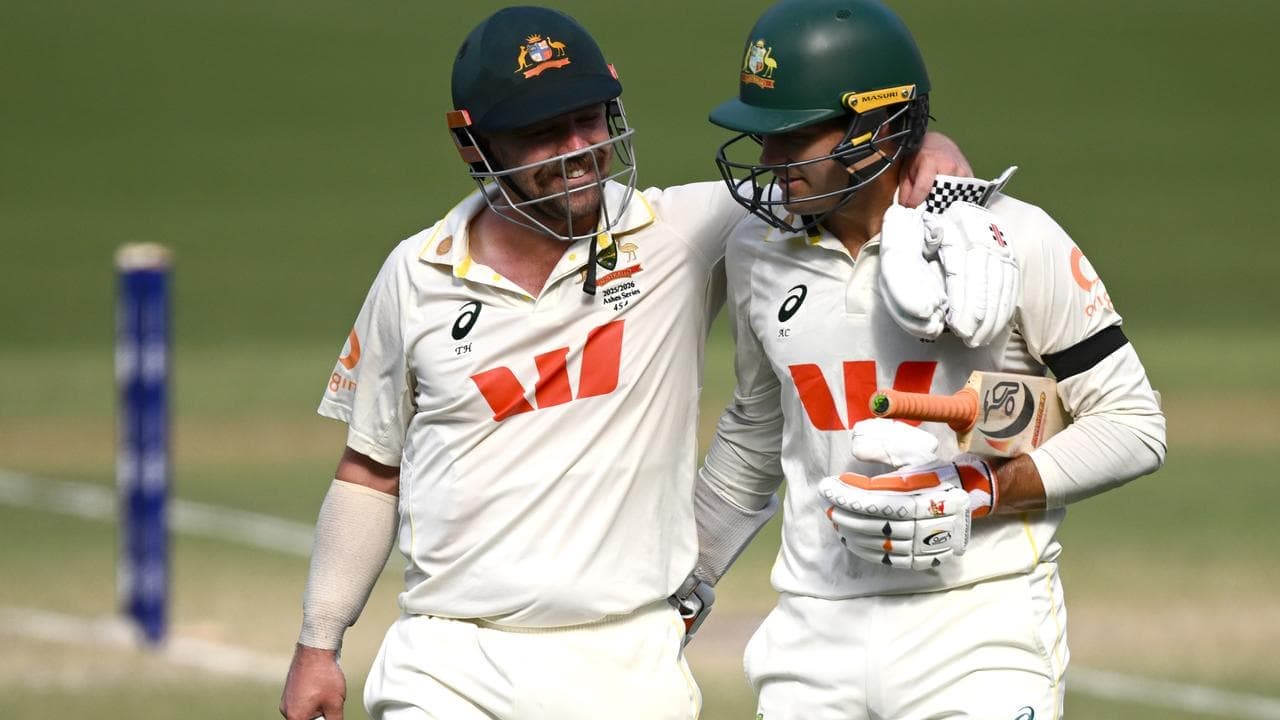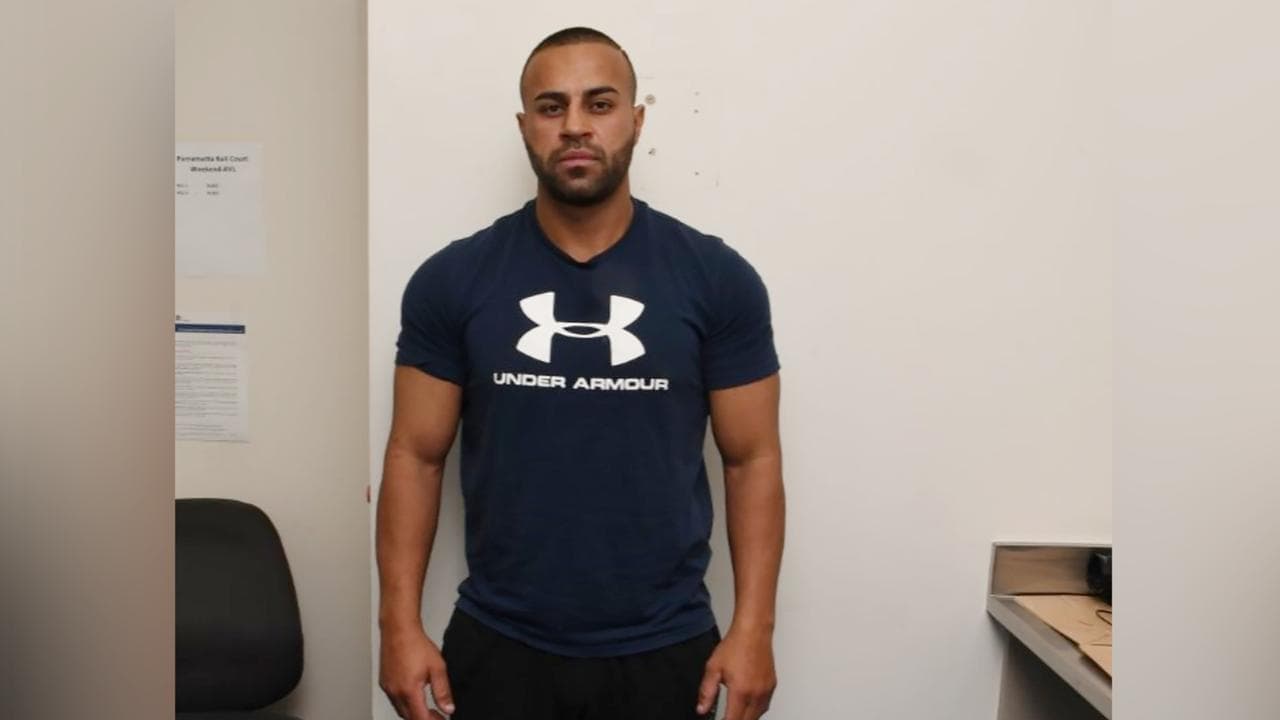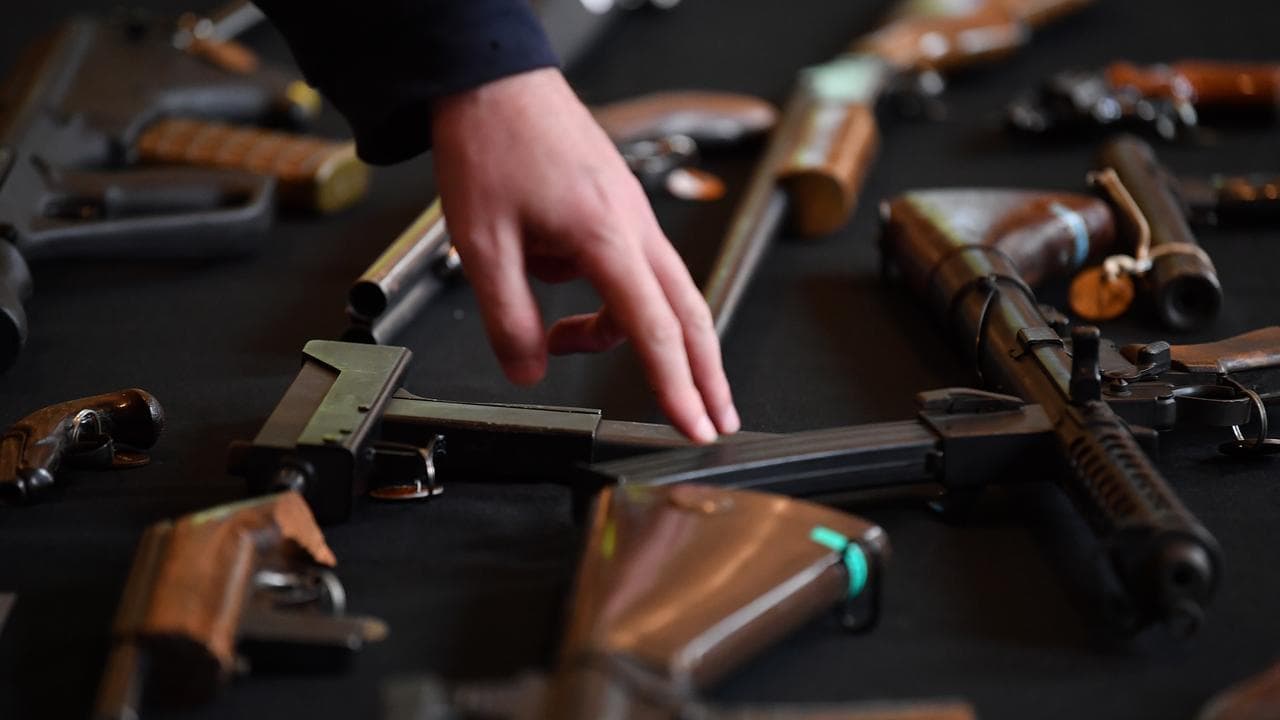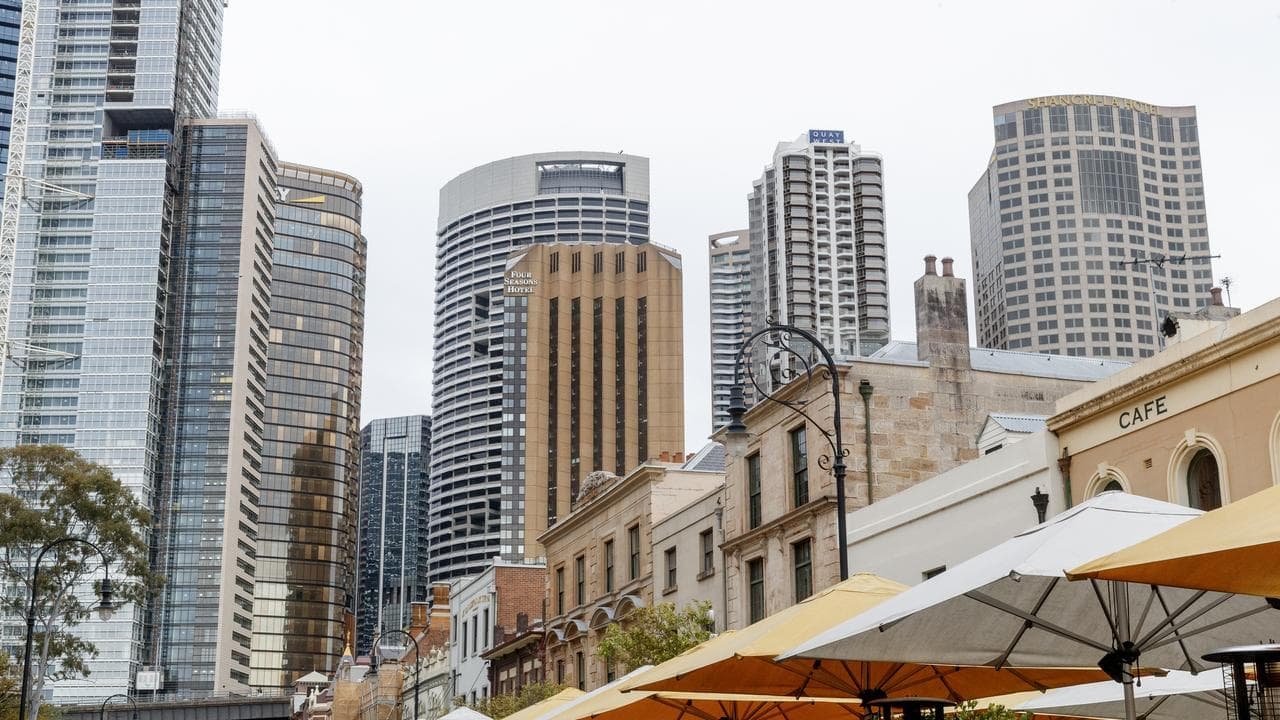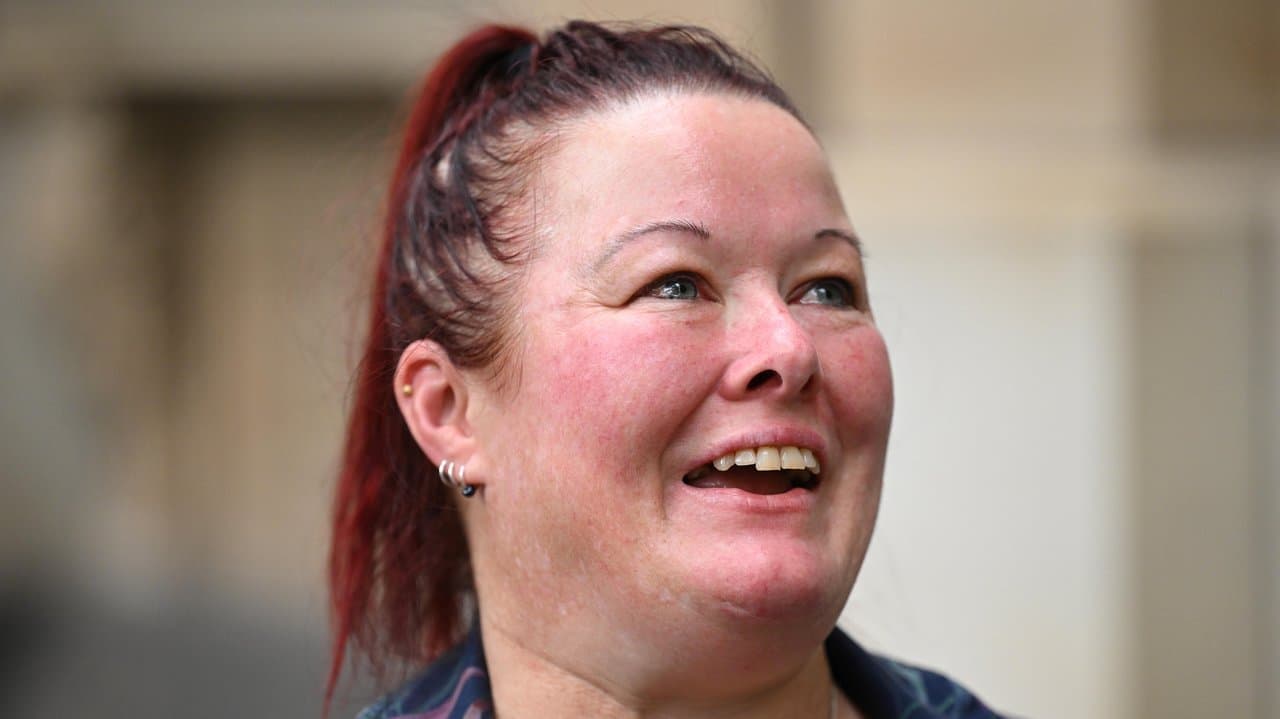The Statement
An Instagram post claims a US Supreme Court ruling means that people who have received mRNA-based COVID-19 vaccines are now patented and legally "no longer human".
The July 10 post from an Australia-themed account features a screenshot referring to a 2013 case, which the text says included a ruling that the human genome could be patented if modified by mRNA vaccines.
"This means that everyone who has received the vaccine is now technically 'patented' and something that is patented is 'proprietary' and will be included in the definition of 'transhumans'," the text in the screenshot says.
Similar screenshots and claims have circulated widely on social media, for example in a video here, as well as on various meme libraries, blogs and forums (see here, here and here).
The claim in the post can be traced as far back as an April 27 post on The COVID Blog, which frequently posts misinformation on COVID-19 and vaccines.
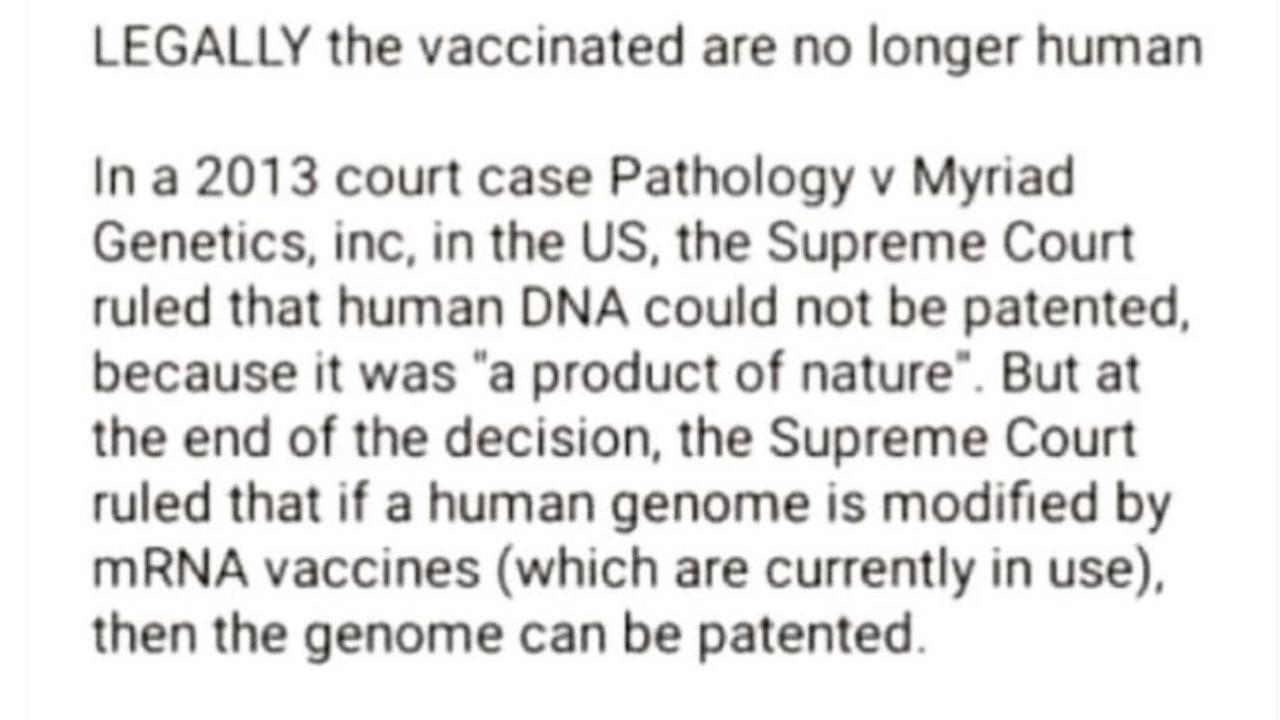
The Analysis
The post repeats a frequently debunked claim that mRNA COVID-19 vaccines alter the human genome alongside incorrect information about the US Supreme Court case and a legal interpretation dismissed as "nonsensical" by experts.
The false claim that mRNA vaccines for COVID-19 modify either the human genome or DNA has been addressed multiple times by AAP FactCheck (see here, here and here), as well as by other fact-checking organisations (see here, here, here and here) and agencies such as the US Centers for Disease Control and Prevention (CDC).
Both the Pfizer and Moderna vaccines use messenger RNA (mRNA), a molecule that puts DNA instructions into action, to cause the body's cells to make a protein piece that in turn triggers an immune response and protects the recipient from the virus.
The post attempts to link the vaccine technology to a 2013 US Supreme Court case involving the Association for Molecular Pathology and Myriad Genetics.
According to the ruling, Myriad Genetics had discovered the location of two genes which significantly increased the risks of breast and ovarian cancer when they mutated and had patented a method for testing for these gene mutations (page 1).
The court decided Myriad Genetics was unable to patent the isolation of the two cancer-causing genes because they were naturally occurring (page 2).
However, it said the creation of the synthetic cDNA - DNA synthesised from a strand of mRNA - involved in the testing process could be patented because it had been modified from its natural state (page 2-3).
But the court did not find that the human genome could be patented if it was modified, as claimed in the post. In fact, the judgment explicitly stated that it did not deal with "the patentability of DNA in which the order of the naturally occurring nucleotides has been altered" (page 21).
The ruling also makes no mention of mRNA vaccines or vaccines in general.
University of Utah law professor and adjunct professor in human genetics Jorge Contreras, who has written a book on the Myriad Genetics Supreme Court case, told AAP FactCheck the claims in the Instagram post are "patently absurd".
Prof Contreras said the post was correct that the Supreme Court ruled human DNA could not be patented because it was a product of nature. However, the same ruling did not determine that the human genome could be patented if it was modified, or that those who received a vaccine which modified their genome could be patented, he added.
"Just because a patented substance is injected into a person, that does not, under even the wildest interpretation of patent law, mean that the person somehow becomes 'patented'," Prof Contreras said via email. "At the most basic level, the US Patent Act expressly prohibits patenting human organisms."
He referred to Section 33(a) of the 2011 Leahy-Smith America Invents Act, which states, "Notwithstanding any other provision of law, no patent may issue on a claim directed to or encompassing a human organism."
Prof Contreras said: "Even without this statute, the idea that injecting someone with a patented vaccine renders that person patented makes no sense. Does implanting a patented artificial heart valve into a person somehow make that person covered by the heart valve patent? Does taking a patented drug? Of course not.
"The 'making' of further copies of the mRNA construct within the person's body is authorised as the natural and intended use of the patented item … The person, of course, would not be permitted to somehow extract the vaccine from his arm, then replicate it and begin to sell vaccine doses. But the idea that the person is patented is utter nonsense."
George Washington University health policy associate professor Lara Cartwright-Smith, who has written a paper on the implications of the 2013 Supreme Court case, told AAP FactCheck the claims in the post were "both factually and legally incorrect".
"Receiving an mRNA vaccine does not and cannot alter one's DNA, so the basis for the claim is wrong," Dr Cartwright-Smith said via email.
She also said a person cannot be legally patented. While the Supreme Court ruling said cDNA could be patented, this in no way affected the legal status of the person who underwent the relevant procedure, she added.
The Associated Press previously labelled similar claims as false.
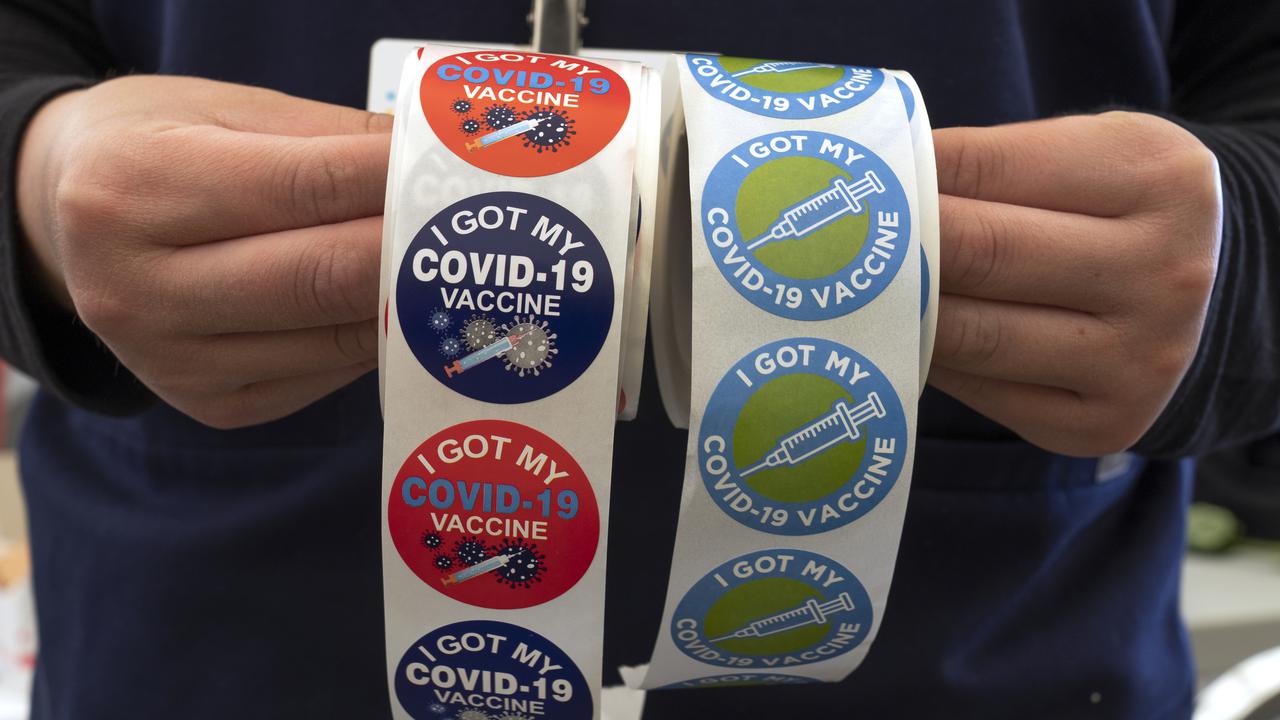
The Verdict
mRNA-based COVID-19 vaccines do not alter the human genome - and even if they did, this would not mean the vaccinated were legally patented.
The Supreme Court case cited in the posts did not find that the human genome could be patented if it were altered. In fact, US law bans any patents that involves the human organism. Experts also say that using a product such as a vaccine for its intended purpose does not mean that the recipient themselves are then considered "patented".
False – Content that has no basis in fact.
AAP FactCheck is an accredited member of the International Fact-Checking Network. To keep up with our latest fact checks, follow us on Facebook and Twitter.








